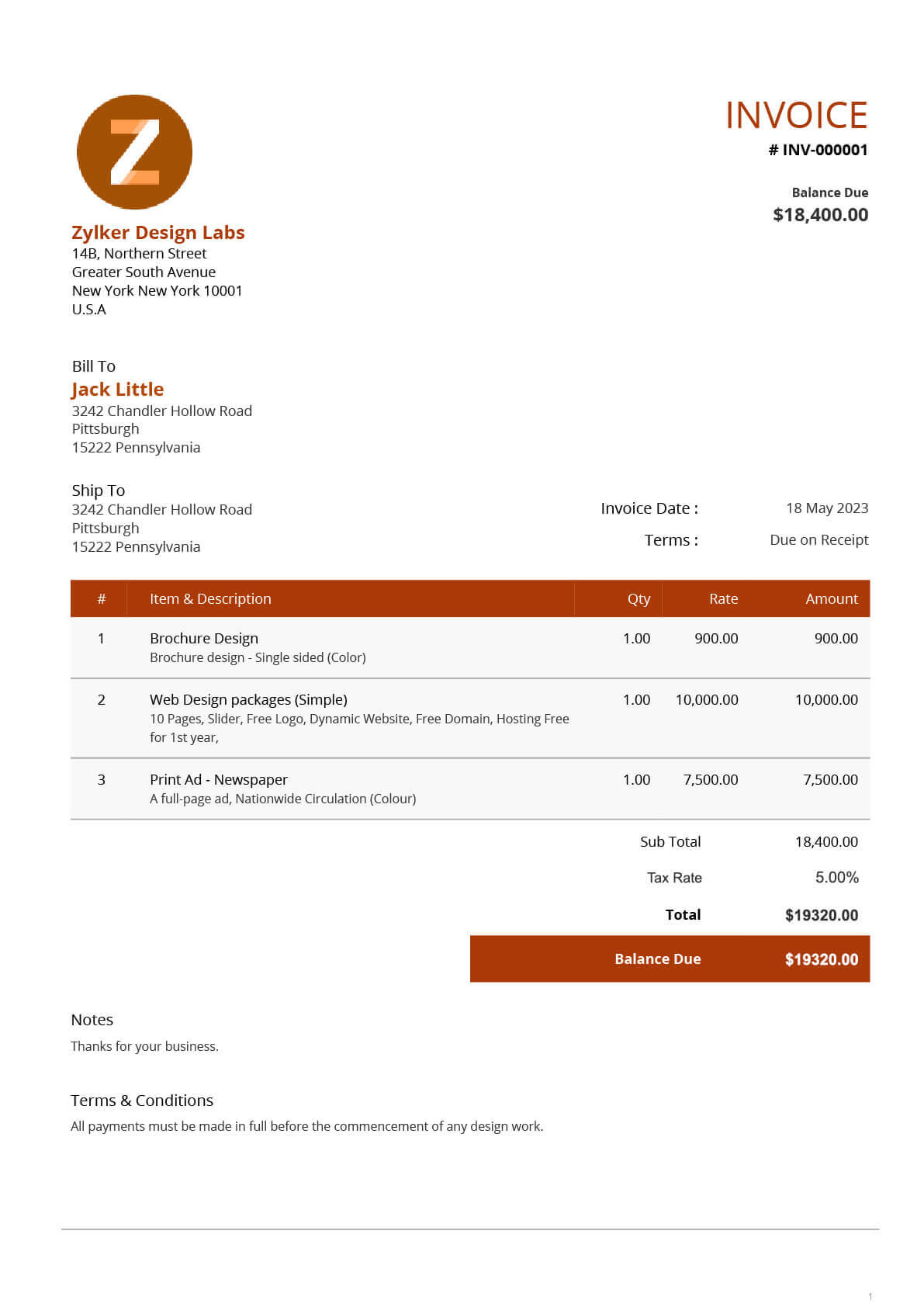An invoice is a formal document that details the goods or services provided, the corresponding costs, and the payment terms. It’s essentially a bill for a customer.
Here’s a basic example of an invoice for services:
Invoice Number: INV-001
Date: [Date]
Customer Name: [Customer Name]
Customer Address: [Customer Address]

Image Source: zoho.com
Services Rendered:
Subtotal: $[Subtotal]
Tax: $[Tax]
Total: $[Total]
Payment Terms: [Payment Terms]
Due Date: [Due Date]
Note: You can add additional details like a company logo, contact information, or specific terms and conditions as needed.
Why is Invoicing Important?
Legal Documentation: An invoice serves as legal proof of the services provided and the amount owed.
Tips for Creating Effective Invoices:
Clear and Concise: Use simple language and avoid technical jargon.
Conclusion
Creating effective invoices is essential for any business. By following the guidelines outlined above, you can ensure that your invoices are professional, accurate, and easy to understand.
FAQs
1. What is the difference between an invoice and a receipt? An invoice is a document sent before or after a service is provided, while a receipt is typically issued after payment is received.
2. Can I include additional charges on an invoice? Yes, you can include additional charges such as shipping fees, taxes, or late fees.
3. How often should I send invoices? The frequency of invoicing depends on your business practices. Some businesses send invoices monthly, while others send them weekly or even daily.
4. What should I do if a customer disputes an invoice? If a customer disputes an invoice, review the details carefully and try to resolve the issue amicably. If necessary, you may need to provide additional documentation or evidence.
5. Can I use invoicing software? Yes, there are many invoicing software options available that can help you create and manage invoices more efficiently.
Invoice For Services Example







